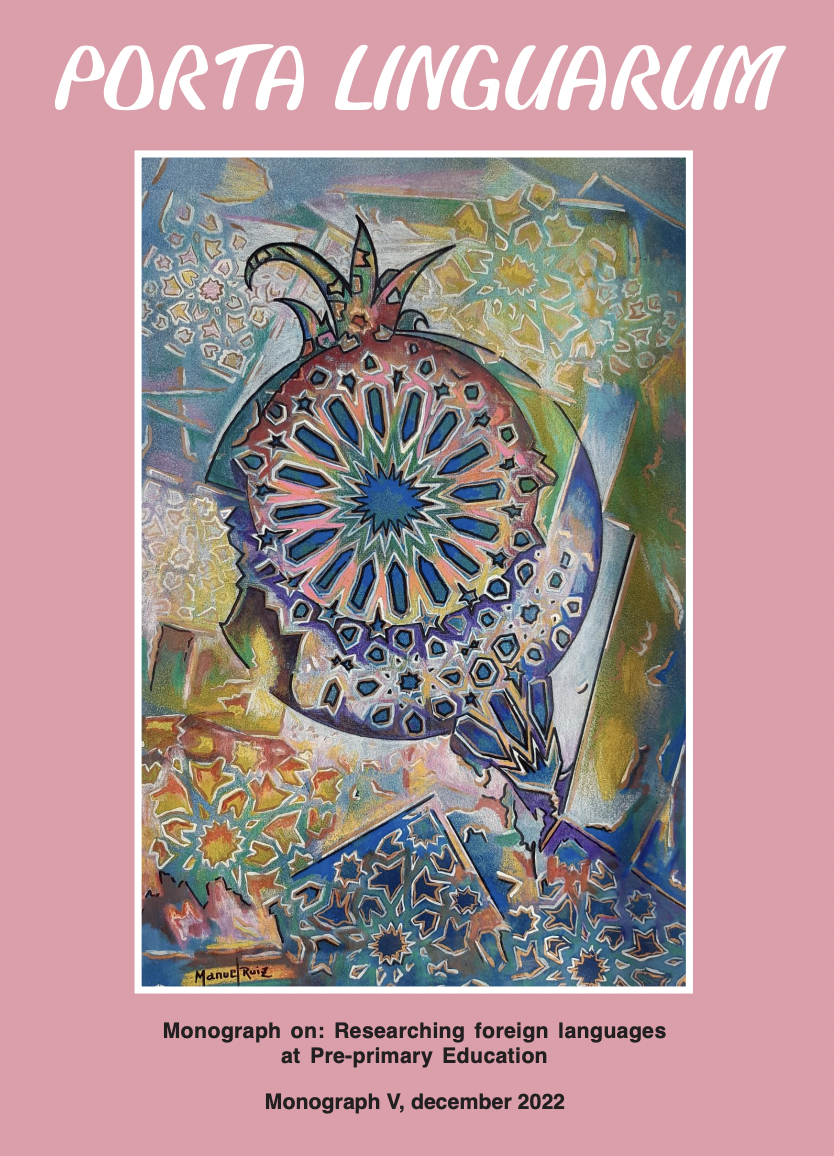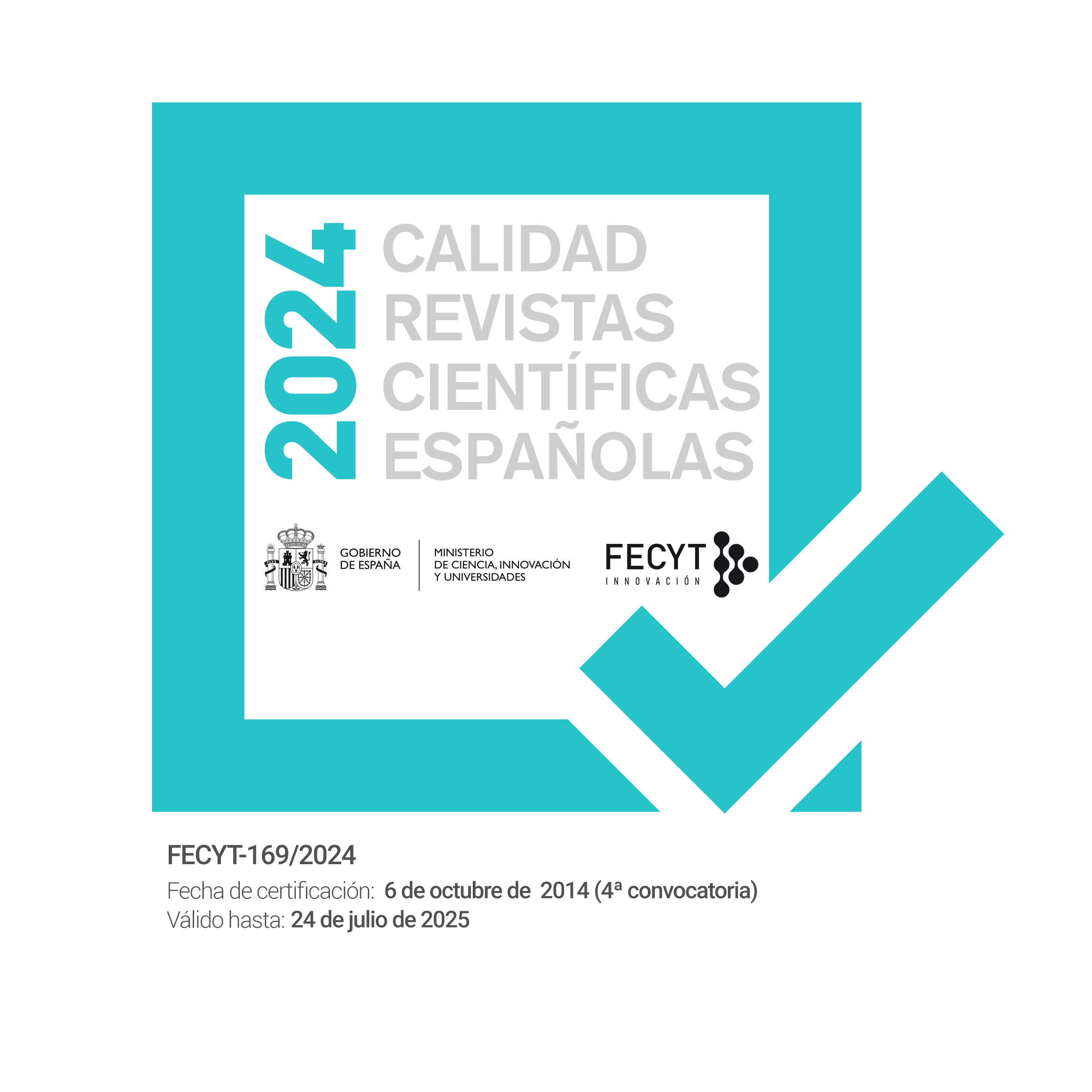Parental involvement in Chinese preschool children’s mobile-assisted foreign language learning
DOI:
https://doi.org/10.30827/portalin.vi.23840Keywords:
parental involvement, young English language learners, mobile-assisted language learning, Chinese parents, smartphone learning appsAbstract
This paper reports on an exploratory study examining parental involvement in preschool-level English language learners’ use of smartphone apps in a Chinese context. The study aimed at understanding the challenges that Chinese parents experienced, and how they responded to these in their engagement with their children’s mobile-assisted language learning. We collected data from 12 Chinese parents using surveys, daily records, and semi-structured interviews. The data analysis revealed that the parents participated in their children’s smartphone-based English learning by regulating their involvement time and selecting the learning content in response to their children’s needs. The findings suggest that Chinese parents’ knowledge of using smartphone apps and their awareness of the English language, as essential cultural capital, increased their active involvement in their children’s English learning. They also faced challenges such as English knowledge constraints and the perceived risks associated with children’s smartphone exposure. The results highlight the need for schools and teachers to support parents’ efforts to get effectively involved in their children’s smartphone-based language learning through modelling, reinforcement, and direct instruction. Implications for English language teachers, schools, and app developers are discussed in relation to the application of smartphone apps in supporting young language learners’ learning.
Downloads
References
Admodisastro, N., Fung, C. K., & Hamid, S. S. A. (2021). Evaluation of Disleksia Belajar mobile app for assisting dyslexic junior school students to learn the Malay language. Turkish Journal of Computer and Mathematics Education, 12(3), 2230-2235. https://doi.org/10.17762/turcomat.v12i3.1172
Ahmadi, D. M. R. (2018). The use of technology in English language learning: A literature review. International Journal of Research in English Education, 3(2), 115-125. https://doi.org/10.29252/ijree.3.2.115
Aquino, A. M., Sabio, C. J., Vigonte, F. G., & De Leon, N. R. (2019). Parental involvement strategies vis-à-vis academic performance of junior high school students in mathematics. International Journal of Information and Education Technology, 9(11), 815–819. https://doi.org/10.18178/ijiet.2019.9.11.1310
Auxier, B., Anderson, M., Perrin, A., & Turner, E. (2020, July). Parenting Children in the Age of Screens. Pew Research Center. https://www.pewresearch.org/internet/2020/07/28/parenting-children-in-the-age-of-screens/
Braun, V., & Clarke, V. (2006). Using thematic analysis in psychology. Qualitative Research in Psychology, 3(2), 77–101. https://doi.org/10.1191/1478088706qp063oa
Callaghan, M. N., & Reich, S. M. (2020). Mobile app features that scaffold pre‐school learning: Verbal feedback and leveling designs. British Journal of Educational Technology, 52(2), 785–806. https://doi.org/10.1111/bjet.13055
Chen, Y., Mayall, H. J., York, C. S., & Smith, T. J. (2019). Parental perception and English learners’ mobile-assisted language learning: An ethnographic case study from a technology-based funds of knowledge approach. Learning, Culture and Social Interaction, 22, 100325. https://doi.org/10.1016/j.lcsi.2019.100325
Chung, G., Phillips, J., Jensen, T. M., & Lanier, P. (2020). Parental involvement and adolescents’ academic achievement: Latent profiles of mother and father warmth as a moderating influence. Family Process, 59(2). https://doi.org/10.1111/famp.12450
Europass. (2017). Common European Framework of Reference, European Union.https://europa.eu/europass/en/common-european-framework-reference
Dias, P., & Brito, R. (2021). Criteria for selecting apps: Debating the perceptions of young children, parents and industry stakeholders. Computers & Education, 165, 104134. https://doi.org/10.1016/j.compedu.2021.104134
Duan, W., Guan, Y., & Bu, H. (2018). The effect of parental involvement and socioeconomic status on junior school students’ academic achievement and school behavior in China. Frontiers in Psychology, 9, 952. https://doi.org/10.3389/fpsyg.2018.00952
Glaser, B. (2005). The Grounded Theory Perspective III: Theoretical Coding. Sociology Press.
Hidalgo, M. (2021). Differences in the task-supported negotiations of younger and older EFL children: From repair into prevention. International Review of Applied Linguistics in Language Teaching, 59(3), 395-419. https://doi.org/10.1515/iral-2018-0206
Hoover-Dempsey, K. V., & Sandler, H. M. (1995). Parental involvement in children's education: Why does it make a difference? Teachers College Record: The Voice of Scholarship in Education, 97(2), 310–331. https://doi.org/10.1177/016146819509700202
Hu, Y. (2007). China’s foreign language policy on primary English education: What’s behind it?. Language Policy, 6(3-4), 359–376. https://doi.org/10.1007/s10993-007-9052-9
Lavrakas, P. J. (2008). Encyclopedia of Survey Research Methods. SAGE Publications. https://doi.org/10.4135/9781412963947
Liu, C., & Hwang, G.J. (2021). Roles and research trends of touchscreen mobile devices in early childhood education: Review of Journal Publications from 2010 to 2019 based on the technology-enhanced learning model. Interactive Learning Environments, 1–20. https://doi.org/10.1080/10494820.2020.1855210
Loewen, S., Crowther, D., Isbell, D., Kim, K., Maloney, J., Miller, Z., & Rawal, H. (2019). Mobile-assisted language learning: A Duolingo case study. ReCALL, 31(3), 293–311. https://doi.org/10.1017/S0958344019000065
Majoral, F. B. (2018). Mobile learning for young English learners. The Routledge Handbook of Teaching English to Young Learners, 320–337. https://doi.org/10.4324/9781315623672-21
Moll, L. C., Amanti, C., Neff, D., & Gonzalez, N. (1992). Funds of knowledge for teaching: Using a qualitative approach to connect homes and classrooms. Theory Into Practice, 31(2), 132–141. http://www.jstor.org/stable/1476399
Montazami, A., Pearson, H. A., Dubé, A. K., Kacmaz, G., Wen, R., & Alam, S. S. (2022). Why this app? How parents choose good educational apps from app stores. British Journal of Educational Technology. https://doi.org/10.1111/bjet.13213
Neumann, M. M. (2018). Parent scaffolding of young children’s use of touch screen tablets. Early Child Development and Care, 188(12), 1654–1664. https://doi.org/10.1080/03004430.2016.1278215
Nunan, D. (2003). The impact of English as a global language on educational policies and practices in the Asia-Pacific region. TESOL Quarterly, 37(4), 589-613. https://doi.org/10.2307/3588214
Okai-Ugbaje, S., Ardzejewska, K., & Imran, A. (2020). Readiness, roles, and responsibilities of stakeholders for sustainable mobile learning adoption in higher education. Education Sciences, 10(3), 49. https://doi.org/10.3390/educsci10030049
Marecka, M., Otwinowska, A. & Jelec, A. (2021). Standardized and tailor-made tests probe different factors influencing the acquisition of second language vocabulary by children . International Review of Applied Linguistics in Language Teaching, 59(3), 335-368. https://doi.org/10.1515/iral-2016-0140
Pérez-Paredes, P., & Zhang, D. (2022). Mobile assisted language learning: Scope, praxis and theory. Porta Linguarum Revista Interuniversitaria De Didáctica De Las Lenguas Extranjeras, 11–25. https://doi.org/10.30827/portalin.vi.21424
Pellerin, M. (2014). Language tasks using touch screen and mobile technologies: Reconceptualizing task-based CALL for young language learners. Canadian Journal of Learning and Technology / La revue canadienne de l’apprentissage et de la technologie, 40(1), Canadian Network for Innovation in Education. https://www.learntechlib.org/p/153324/.
Pfenninger, S. (2022). Emergent bilinguals in a digital world: A dynamic analysis of long-term L2 development in (pre)primary school children. International Review of Applied Linguistics in Language Teaching, 60(1), 41-66. https://doi.org/10.1515/iral-2021-0025
Raguindin, P.Z.J., Lising, R.L.S., & Custodio, Z.U. (2021). Strategies for parental involvement during emergency remote teaching scale: Its psychometric properties. European Journal of Educational Research, 10(1), 427-439. https://doi.org/10.12973/eu-jer.10.1.427
Slotta, D. (2021, December 6). China: Smartphone users by age 2019. Statista. Retrieved January 3, 2022, from https://www.statista.com/statistics/1133033/china-smartphone-users-by-age/
Sun, H., & Ng, E. L. (2021). Home and school factors in early English language development. Asia Pacific Journal of Education, 1–16. https://doi.org/10.1080/02188791.2021.1932742
Sundqvist, P., & Sylvén, L. (2014). Language-related computer use: Focus on young L2 English learners in Sweden. Recall, 26(1), 3-20. doi: 10.1017/s0958344013000232
Swendeman, D., Sumstine, S., Brink, A., Mindry, D., Medich, M., & Russell, M. (2020). Smartphone self-monitoring by young adolescents and parents to assess and improve family functioning: Qualitative feasibility study. JMIR Formative Research, 4(6), e15777. https://doi.org/10.2196/15777
Tan, C. Y., Lyu, M., & Peng, B. (2020). Academic benefits from parental involvement are stratified by parental socioeconomic status: A meta-analysis. Parenting, 20(4), 241–287. https://doi.org/10.1080/15295192.2019.1694836
Wan, Z., & Gao. (2021). ‘Home away from home’: Understanding Chinese parents’ ideological beliefs and involvement in international school students’ language learning. Current Issues in Language Planning, 22(5), 495–515. https://doi.org/10.1080/14664208.2021.1882767
Wang, X., & Xing, W. (2018). Understanding elementary students’ use of digital textbooks on mobile devices: A structural equation modeling approach. Journal of Educational Computing Research, 57(3), 755–776. https://doi.org/10.1177/0735633118758643
Zaman, B., Nouwen, M., Vanattenhoven, J., De Ferrerre, E., & Looy, J. V. (2016). A qualitative inquiry into the contextualized parental mediation practices of young children’s digital media use at home. Journal of Broadcasting & Electronic Media, 60(1), 1–22. https://doi.org/10.1080/08838151.2015.1127240



















